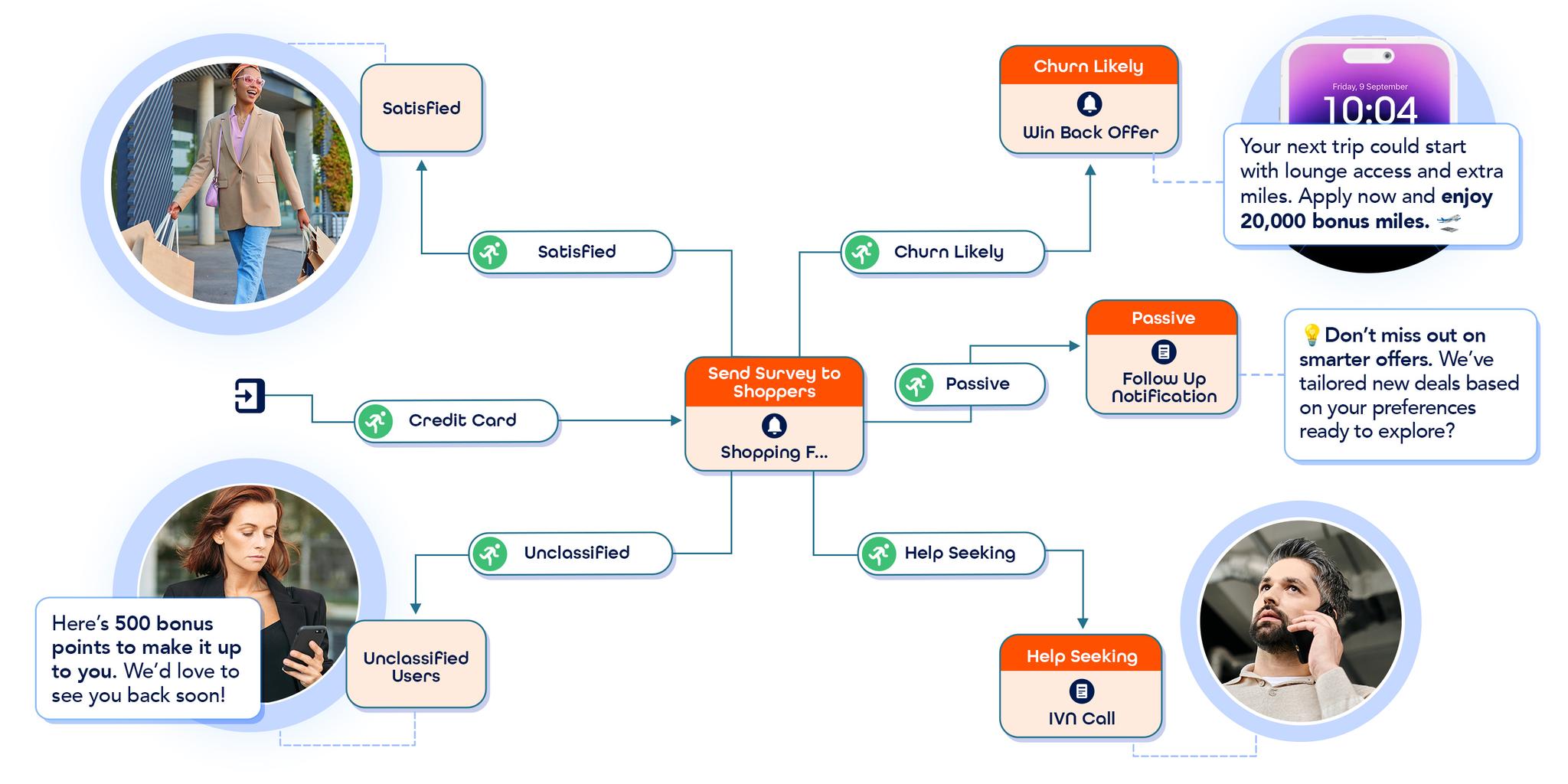- What Are Contextual Offers?
- Real-Time Decisioning in Banking
- Examples of Contextual Marketing in Digital Banking
- Contextual Offers vs. Traditional Campaigns
- The Business Impact of Contextual Engagement
- Personalization vs. Contextualization in Banking
- Best Channels for Delivering Contextual Offers
- Moving from Campaigns to Conversations
- How Evam Enables Contextual Marketing for Banks
- Conclusion
As digital banking becomes the latest trend, customer expectations continue to rise. People no longer want just convenience; they want relevance. They expect every interaction with their bank to feel timely, personalized, and useful. That’s where contextual offers come into play.
What Are Contextual Offers?
Contextual offers are real-time, personalized promotions or messages triggered by a customer’s current behavior, location, or situation. Instead of relying on broad segments or historical data alone, these offers respond to live context—like a large transaction, a login from a new device, or repeated visits to a loan calculator.
Real-Time Decisioning in Banking
Delivering contextual offers requires more than just customer data—it requires the ability to act on that data instantly. This is where real-time decisioning comes in. Banks must be able to process live behavioral signals, apply eligibility and suppression rules, and trigger the best offer or message in milliseconds.
Examples of Contextual Marketing in Digital Banking
To better understand the power of contextual marketing, consider these real-world banking scenarios:
A customer checking their balance before a holiday might be offered a personalized travel loan.
Someone applying for a credit card could be shown a digital wallet onboarding bonus.
A user reaching their savings goal might receive a tailored investment product recommendation.
A first-time login from a new device could trigger a security awareness message or digital onboarding guide.
These moments feel intuitive because they align with what the customer is already doing or thinking. They turn static interfaces into intelligent engagement points.
Contextual Offers vs. Traditional Campaigns
Traditional marketing relies on scheduled campaigns and static segmentation. While these still have a place, they often miss the mark on timing and intent. In contrast:
| Traditional Campaigns | Contextual Offers |
| Scheduled in advance | Triggered in real-time |
| Based on static segments | Based on live behavior and signals |
| One-size-fits-many messaging | Hyper-personalized, moment-based content |
| Often ignored by users | More likely to drive action and relevance |
The Business Impact of Contextual Engagement
Banks that adopt contextual marketing can see major benefits:
Higher Conversion Rates: Offers are more likely to be accepted when they make sense in the moment.
Improved Customer Experience: Relevant messaging reduces friction and builds trust.
Increased Cross-Sell/Upsell: Proactive, contextual suggestions surface the right products at the right time.
Reduced Churn: Personalized experiences increase stickiness and long-term loyalty.
Improved Customer Lifetime Value (CLTV): Timely and relevant interactions foster stronger relationships and long-term revenue.
Personalization vs. Contextualization in Banking
While personalization focuses on who the customer is (e.g., name, preferences), contextualization focuses on what the customer is doing right now. Combining both creates a powerful engagement strategy that not only feels personal but also timely and purposeful.
Best Channels for Delivering Contextual Offers
Contextual engagement is most effective when delivered through the right channels. These often include:
Mobile push notifications: Immediate, non-intrusive updates.
In-app messages: Context-aware promotions while the user is engaged.
SMS & email: Great for follow-up or urgent offers.
Call center and chatbot integration: Ensures consistent experience across service touchpoints.
Moving from Campaigns to Conversations
Contextual engagement shifts the focus from one-way campaigns to two-way, real-time conversations that respond to customer intent as it unfolds. This requires:
A live stream of behavioral data
Smart decisioning engines
Channel orchestration
Offer suppression logic
Millisecond-level response times
How Evam Enables Contextual Marketing for Banks
Evam enables real-time contextual engagement in banking through its advanced decisioning and orchestration engine. With Evam, banks can:
Analyze behavioral signals in real-time
Apply personalized business rules instantly
Trigger multichannel campaigns with <200ms latency
Deliver the right offer to the right person, at the right time
This leads to smarter, faster, and more personalized experiences—right when it matters most.
Conclusion
As customer expectations continue to evolve, contextual engagement is becoming not just a differentiator—but a necessity. With the right infrastructure and a real-time mindset, banks can unlock stronger loyalty, higher conversion, and more meaningful relationships with every interaction.








